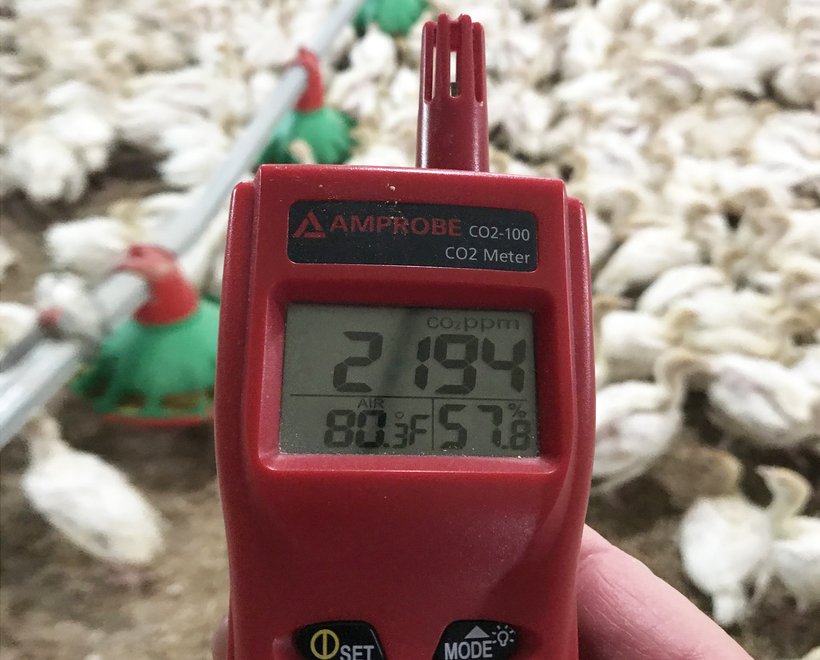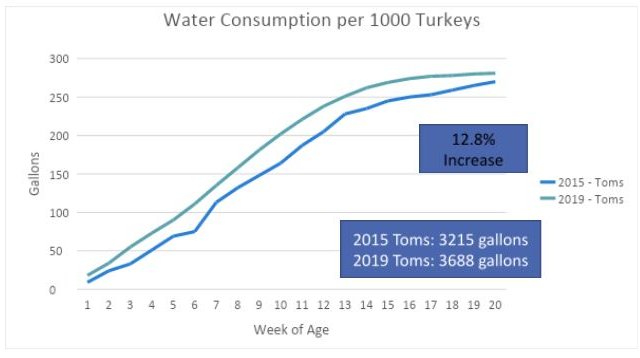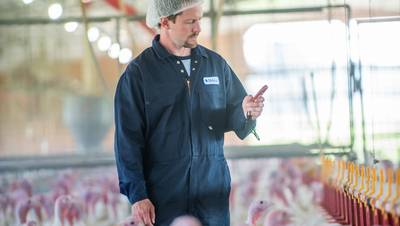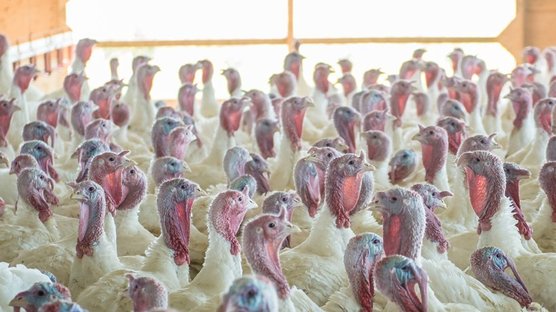
Published on Feb. 25, 2021
How Does Humidity Affect the Environment?
Written in collaboration between Hannah Menges and William Alexander
Temperature means nothing without understanding the relationship with humidity. As you will soon find out, if you control humidity in a turkey barn, you control the environment. The National Geographic Society describes humidity as the amount of water vapor in the air. Humidity will be high if there is a lot of water vapor in the air. The higher the humidity, the wetter the environment feels.
Effects of Humidity on Temperature
Simply looking at the temperature does not tell you anything about the real feel for the birds. For example, in a barn using minimum ventilation, the temperature may read 77˚F (25˚C) in the brooder, but if the humidity is 70%, that makes the real feel to the birds a lot warmer than the temperature is reading. To humans, the real feel, according to the humidex, would be 91.4˚F (33˚C). We don’t know exactly what temperature that is to the birds, but it is even warmer. This is because birds pant to cool themselves while humans sweat. The higher the humidity, the less effective panting is for the birds. It is for this reason that humidity in the barn should be less than 60% in brooders and under 65% in finishers when using minimum ventilation.
Effects of Humidity on Barn Conditions
Humidity increases because of inadequate ventilation. Once humidity starts rising above 60%, the litter begins to get damp. Litter acts much like a sponge, which has limited moisture holding capacity. The birds are constantly adding to the wetness of the litter, which will quickly become caked if we’re not paying attention to humidity and air exchange. Generally, for every pound of feed a turkey eats, it will drink approximately double that amount of water. Less than a third of that water is retained by that bird, which means the rest goes into the environment. Thanks to genetic improvement, over the past four years toms have increased their water consumption over 20 weeks by 12.8%. That is a lot of water going back into the barn, mainly straight into the litter.

Due to the increased moisture, we need ventilation systems to be as efficient as possible. That means having proper airflow and air exchange to control the moisture in the barn. You can now learn how to tight test your barn as well as test and control the airflow in the barn with our how-to videos.
Summary
Understanding humidity in your barn is critical for moisture control and bird health. The weather, flock nutrition, and ventilation all play a role in how well we control barn conditions. As genetic improvement marches on, it will become even more important to maintain and improve our ventilation efficiencies to keep up with year-over-year bird growth.



